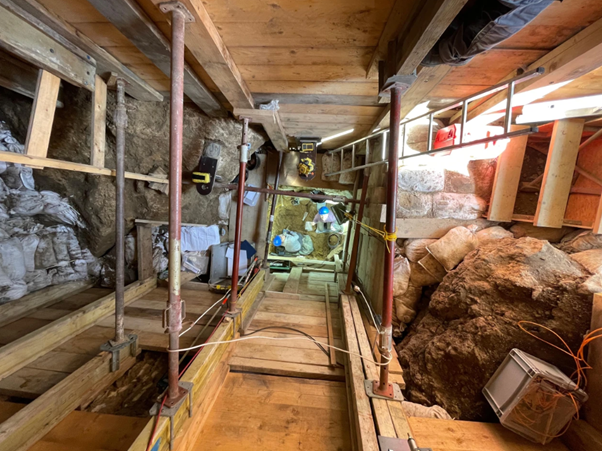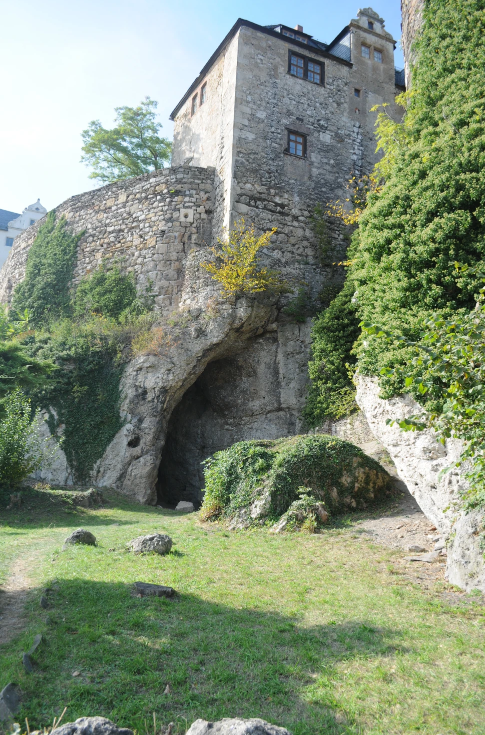Bone fragments found near, Ranis, central Germany, prove Homo sapiens were in the area at least 45,000 years ago, possibly the earliest date for our species in northern Europe. The discovery indicates that modern humans and Neanderthals lived side by side for thousands of years, rather than our ancestors’ arrival spelling immediate doom for humanity’s nearest relatives.
The question of how humans and Neanderthals interacted is a crucial unresolved part of the story we can tell about ourselves. We know there was enough co-existence for substantial amounts of Neanderthal DNA to end up in the genomes of people of Eurasian descent.
However, we don’t know if these encounters were consensual or violent, if they took place during long periods of coexistence, or if the arrival of the newer model of human caused a quick replacement of the old. Knowing the answers might tell us something about humanity’s capacity to live with those who resemble us most closely, and therefore perhaps with ourselves.
Some of the answers may lie in a cave called Ilsenhöhle at the base of a castle near Ranis, where both bones and a type of stone blade known as a leaf point have been found. Leaf points were used all the way from what is now Poland to Great Britain, and are thought to be the product of a common culture, known as the Lincombian–Ranisian–Jerzmanowician technocomplex, or LRJ.
Previous studies of the Ilsenhöhle cave demonstrated it was at least 40,000 years old, but failed to answer the question of whether the tools were made by H. sapiens or Neanderthals. It’s assumed the answer to this question would be the same for leaf points throughout their range.
This is where Dr Elena Zavala of the University of California, Berkeley, and co-authors have produced a major advance. They first used bone proteins to show the skeletal remains at the site were from humans. Subsequently, they extracted mitochondrial DNA from 13 bones found at the site, and showed these came from a group of Homo sapiens that shared common ancestry on the maternal line.
The analysis was done on nine bones discovered, but not recognized as human, in the 1930s, and four found more recently by digging deeper into the cave, and removing a boulder that stopped the original excavation. The bones and tools were so intermingled the team are confident the owners of one made the other.

Archaeology has developed a long way since the 1930s, allowing a recent dig to find many things at Ranis by digging 8 meters (26 feet) beneath where the previous excavation stopped.
This proves “Homo sapiens made this technology, and that Homo sapiens were this far north at this time period, which is 45,000 years ago,” Zavala said in a statement. “So these are among the earliest Homo sapiens in Europe.”
There are signs that Homo sapiens made it to Greece a great deal earlier than this, but for whatever reason they didn’t flourish. The true conquest of Europe only came after arrival in southern France around 54,000 years ago, and may have taken a long time to reach northern Europe.
If Zavala and co-authors are correct, the time to expand into the bitter cold was not so long, despite temperatures 7-15°C (13-27°F) colder than today. The leaf points probably helped. On the other hand, it indicates that neither warfare nor competition caused Neanderthals to disappear soon after Homo sapiens’ arrival.
“Homo sapiens reached northwestern Europe long before Neanderthal disappearance in southwestern Europe,” said senior author Professor Jean-Jacque Hublin of the Collège de France.
These would have been significant advances on their own, but the mitochondrial DNA revealed something else. Twelve of the Ranis bones came from a surprisingly close relative of the woman who left behind a skull in a cave at Zlatý kůň in the Czech Republic a few thousand years later. The other bone was more closely related to an individual around the same time from Italy, even further afield.
“That raises some questions: Was this a single population? What could be the relationship here?” Zavala said. “But with mitochondrial DNA, that’s only one side of the history. It’s only the maternal side. We would need to have nuclear DNA to be able to start looking into this.” Nuclear DNA is far harder to capture from bones this old.
Most of the DNA at the site wasn’t human at all, coming from a mix of prey the humans brought back, and cave bears and hyenas who sheltered in the cave when the humans weren’t using it. This was apparently most of the time.
The authors conclude these people were highly mobile and well adapted to the cold conditions, something that had previously been thought not to occur until much later. Nevertheless, despite these capacities, they don’t seem to have monopolized the area. Indeed, the earlier inhabitants of the continent persisted for a long time even in south-western Europe, which being warmer would seem likely to have offered more of an advantage to the recent arrivals from Africa.

Who would have thought the story of humanity’s arrival in some of the most hostile climates we have ever encountered, and our relationship to our nearest relatives, lies at the bottom of a fairy tale castle?
Members of the team responsible for this study have published it along with accompanying papers on the diet and lifestyle of the human inhabitants of Ilsenhöhle, and the climatic conditions.
There’s a long way to go in unraveling how the two populations behaved toward each other, and why the Neanderthals eventually did die out. Nevertheless, there is something hopeful in the possibility that we could co-exist for thousands of years with a species so close to us that some consider them a subspecies of our own. Maybe there are lessons on how to get along with others of our own kind.
The main study is open access in Nature, accompanied by simultaneous publications in Nature Ecology and Evolution on the climate and diet of the inhabitants.
Source Link: Oldest Homo Sapiens Discovery In Northern Europe Proves Long Overlap With Neanderthals